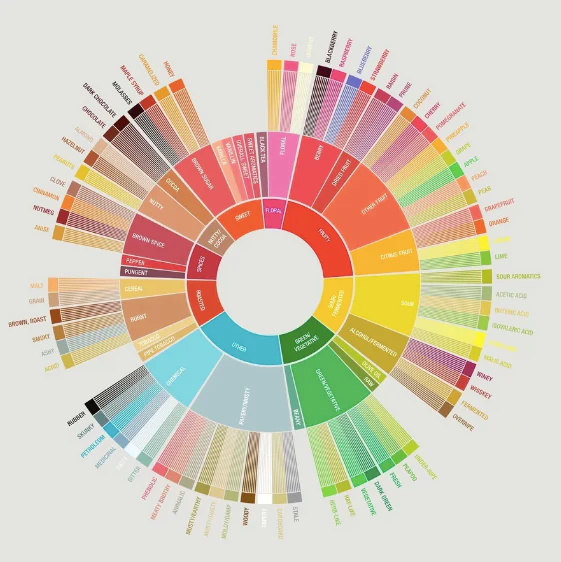Table of Contents
ToggleIs there an art to coffee tasting or do you pour it down your throat like a shot of tequila? The first time I tasted black coffee, I decided never again.
So, what was I thinking about drinking it straight after pouring it out of my Moka pot the other day? I’d tell you what I was thinking: What if coffee really is an acquired taste and I am only thinking bitter so tasting bitter?
I was convinced if I released the thought of bitterness from my mind, then I would feel the real taste of my coffee and not my already assumed bitterness.
Sigh*
Is it just me or have you ever found yourself anticipating a bitter taste as you lift your cup of coffee to your lips? Even before yout aste it. They say the flavour profile of coffee is a sophisticated blend of various elements that cater to different taste preferences.
My taste preference is still frappuccino but time will reveal where coffee tasting and drinking leads.
Understanding flavour profiles will help you appreciate what you taste in your coffee.
A barista said there is an art to tasting coffee. If you want to taste coffee like a barista, pay close attention to the path to tasting coffee like a barista.
4 Paths To Enhancing The Art Of Coffee Tasting
This highly informative post on tastes shows why taste is so important for experiencing coffee. As you proceed in this post, these paths will teach you the art of coffee tasting.
Path 1 – Understanding the Flavour Wheel
At the core of coffee tasting is the flavour wheel – a comprehensive guide that categorizes the diverse taste notes found in coffee. From fruity and floral to nutty and chocolatey, the flavour wheel is a roadmap for exploring coffee’s myriad flavours. By familiarizing yourself with the flavour wheel, you can enhance your palate and learn the subtle nuances of different coffee.
Path 2 – Developing Your Palate
Some people do not taste things properly because they are not mindful of tasting and what happens on their tongues when food or drinks come in contact with it. Tasting can happen without one’s conscious awareness. Also, your brain can produce certain familiar tastes based on past experiences and sensory cues before the element comes in contact with your taste organ.
Tasting coffee like a barista requires practice. It also requires mindful tasting. You will have to come out of your brain’s prewired perception of coffee’s taste and allow yourself to taste the coffee in your mouth. Not the one your brain already stored as a familiar coffee taste.
When you take that first sip, feel the parts of your tongue tasting the liquid swirling on it, feel the weight of the liquid in your mouth, and allow your senses to enjoy the aroma. You may even close your eyes to reduce visual distractions and be more present with the sensation of tasting.
The aroma of freshly brewed coffee can give clues to the flavour profile. Take small sips and let the coffee linger on your palate, allowing the flavours to unfold, before swallowing.

Path 3 – Decoding the Language of Coffee Tasting
When sharing your coffee-tasting experience, you should learn the language commonly used to describe coffee flavours. Terms like “bright,” “citrusy,” “caramel,” and “earthy” are often used to capture the essence of different taste notes. By expanding your vocabulary and experimenting with descriptive language, you can articulate your coffee-tasting experience.
The comment section is a good place to practice describing tasting different coffee flavours and identifying the different flavour profiles.
Path 4 – Elevating Your Coffee Tasting Experience
Like a barista, you can enhance your coffee-tasting experience by improving your ability to taste. Whether you prefer a light roast with floral undertones or a dark roast with chocolatey notes, the world of coffee tasting offers endless possibilities for exploration. Embrace the diversity of coffee flavours and embark on a sensory journey that will deepen your appreciation for your beloved beverage.
Conclusion
Mastering the art of coffee tasting is an interesting journey that requires patience, curiosity, and a willingness to explore the different parts of your tongue and how they respond to coffee. I also think you get to explore and train your brain and mind to focus and zone in on the tasting experience.
By learning flavour profiles with the flavour wheel, developing your palate, honing your descriptive skills, and elevating your coffee tasting experience, you can taste coffee like a barista and unlock a world of sensory delights.
At Brew and Balance, our quaterly yoga and coffee workshops, we teach the art of coffee tasting focusinf particularly on mindful tasting. Subsbribe here to stay up to date with Brew and Balance announcements and get free fresh coffee beans sample, on the house.

esewalter
Mom | Yoga Teacher | Coffee Blogger | Legal Mind. I explore coffee's journey from farm to cup and especially how you can start your home brewing journey.





